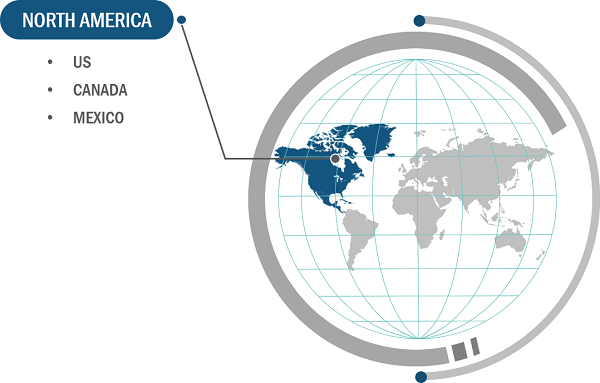Rise in Use of Public Transport in North America Boosts North America HVAC System for Bus Market Growth
According to our latest study titled "North America HVAC System for Bus Market Forecast to 2031 – Country Share, Trend, and Growth Opportunity Analysis – by Component, Type, Unit Type, and Drive Type," the market is projected to grow from US$ 489.64 million in 2023 to US$ 739.51 million by 2031; it is estimated to register a CAGR of 5.3% from 2023 to 2031. The report includes growth prospects in light of the current North America HVAC system for bus market trends and factors influencing the market growth.
US President Biden signed into law the Bipartisan Infrastructure Deal in November 2021 to develop a more sustainable, resilient, and equitable economy, create millions of good jobs year after year, increase labor force participation, and deal with the ongoing climate crisis. This Bill opens US$ 550 billion for new federal investments in the US infrastructure, covering transportation, broadband, and utilities. In July 2024, the Federal Transit Administration (FTA) of the United States Department of Transportation (DoT) announced that it would invest nearly US$ 1.5 billion in 117 projects to improve public transportation in 47 states. Under the President's historic Bipartisan Infrastructure Law, FTA has granted approximately US$ 5 billion during 2021–2023 to replace and modernize transit buses on America's roads, collaborating with American workers to develop innovative technologies. More than 4,600 of these new buses will be produced by US manufacturers. Further, according to the American Public Transportation Association (APTA), in 2023, 36.87 billion total passenger miles were traveled, and 7.11 billion trips were completed. Growing government investments in public transportation and increasing use of bus transportation systems create the need for bus HVAC systems. Bus HVAC systems are widely used on bus fleets to provide draft-free forced air extraction to produce a throughput of fresh air. Thus, the rise in the use of public transport in North America is driving the North America HVAC system for bus market.
North America HVAC System for Bus Market
North America HVAC System for Bus Market Size and Forecast (2021 - 2031), Global and Regional Share, Trend, and Growth Opportunity Analysis Report Coverage: By Component (Compressors, Controls, Convectors, Heaters, and Others), Type (Coach, Transit Bus, School Bus, and Shuttle Bus), Unit Type [Packaged Unit (AC Roof Mounts and Rear Mounts) and Split Unit], and Drive Type (Engine Driven and Battery Driven), and Country
North America HVAC System for Bus Market Analysis by 2031
Download Free Sample
The North America HVAC system for bus market analysis has been carried out by considering the following segments: component, type, unit type, and drive type. Based on component, the market is segmented into controls, convectors, compressors, heaters, and others. In terms of type, the market is categorized into transit bus, coach, shuttle bus, and school bus. Based on unit type, the market is divided into split unit and packaged unit. Based on drive type, the market is segmented into engine driven and battery driven. The engine driven segment held a larger North America HVAC system for bus market share in 2023.
The scope of the North America HVAC system for bus market report is primarily divided into the US, Canada, and Mexico. Rising investments in public transport, increasing focus on commuter comfort, improving level of service, and growing use of public transport across the region are driving the adoption of HVAC systems for buses. In late 2022 and early 2023, several US transit agencies—including TransLink, Edmonton Transit Service, Chicago Transit Authority, Metropolitan Transportation Authority, and Southwest Ohio Regional Transit Authority—reported a consistent increase in ridership. Countries in the region are focusing on deploying more and more electric buses on the roads for public transit to meet their net-zero emission goals. In January 2022, CALSTART published its annual inventory of zero-emission buses (ZEBs)—Zeroing in on ZEBs—providing insight on the current state of ZEBs ahead of US$ 5.25 billion funding under the Infrastructure Investment and Jobs Act through the Federal Transit Administration's Low-No Program. The number of full-size ZEBs has grown to 3,533 buses nationally in Canada, an increase of 27% since 2020. The report stated that most ZEB fleets are small (10 or fewer), so the coming funding will be instrumental in scaling fleets. Moreover, in 2024, a US$ 174 billion initiative to support EVs generally has been proposed by the Biden administration. In the meantime, as part of an effort to move the country toward zero-emission transportation, two prominent U.S. Senate Democrats have proposed investing US$ 73 billion to electrify the country's 70,000 transit buses and other transit vehicles. Public transportation system development and improvement initiatives in Mexico have been pursued by several governmental branches. A plan was introduced in March 2022 for the installation of an electric fleet in Mexico City's "Metrobús" L3 and L4 lines. Such initiatives across North America to deploy more electric buses on the roads and enhance public transport infrastructure to encourage more and more commuters to use public transport are leading the market growth of HVAC systems for buses.
Thermo King; Guchen Industry; MAHLE GmbH; Denso; Valeo; Bus Climate Control; Eberspächer; WABCO; TKT HVAC Co., Ltd.; and Shinano Kenshi Co., Ltd. are among the key players profiled in the North America HVAC system for bus market report.
Contact Us
Phone: +1-646-491-9876
Email Id: sales@theinsightpartners.com